Biological function and molecular mapping of M antigen in yeast phase of Histoplasma capsulatum
- PMID: 18927619
- PMCID: PMC2566600
- DOI: 10.1371/journal.pone.0003449
Biological function and molecular mapping of M antigen in yeast phase of Histoplasma capsulatum
Abstract
Histoplasmosis, due to the intracellular fungus Histoplasma capsulatum, can be diagnosed by demonstrating the presence of antibodies specific to the immunodominant M antigen. However, the role of this protein in the pathogenesis of histoplasmosis has not been elucidated. We sought to structurally and immunologically characterize the protein, determine yeast cell surface expression, and confirm catalase activity. A 3D-rendering of the M antigen by homology modeling revealed that the structures and domains closely resemble characterized fungal catalases. We generated monoclonal antibodies (mAbs) to the protein and determined that the M antigen is present on the yeast cell surface and in cell wall/cell membrane preparations. Similarly, we found that the majority of catalase activity was in extracts containing fungal surface antigens and that the M antigen is not significantly secreted by live yeast cells. The mAbs also identified unique epitopes on the M antigen. The localization of the M antigen to the cell surface of H. capsulatum yeast and the characterization of the protein's major epitopes have important implications since it demonstrates that although the protein may participate in protecting the fungus against oxidative stress it is also accessible to host immune cells and antibody.
Conflict of interest statement
Figures

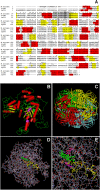
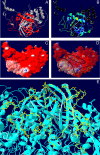
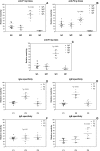
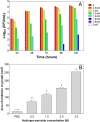
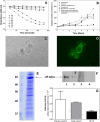

Similar articles
-
Molecular cloning, characterization, and expression of the M antigen of Histoplasma capsulatum.Infect Immun. 1999 Apr;67(4):1947-53. doi: 10.1128/IAI.67.4.1947-1953.1999. Infect Immun. 1999. PMID: 10085041 Free PMC article.
-
Evidence that the M antigen of Histoplasma capsulatum var. capsulatum is a catalase which exhibits cross-reactivity with other dimorphic fungi.J Med Vet Mycol. 1990;28(6):479-85. J Med Vet Mycol. 1990. PMID: 2093121
-
Monoclonal antibodies to heat shock protein 60 alter the pathogenesis of Histoplasma capsulatum.Infect Immun. 2009 Apr;77(4):1357-67. doi: 10.1128/IAI.01443-08. Epub 2009 Jan 29. Infect Immun. 2009. PMID: 19179416 Free PMC article.
-
Protective antibodies and endemic dimorphic fungi.Curr Mol Med. 2005 Jun;5(4):435-42. doi: 10.2174/1566524054022530. Curr Mol Med. 2005. PMID: 15977999 Review.
-
Histoplasma capsulatum at the host-pathogen interface.Microbes Infect. 2008 Jul;10(9):973-7. doi: 10.1016/j.micinf.2008.07.011. Epub 2008 Jul 10. Microbes Infect. 2008. PMID: 18672088 Free PMC article. Review.
Cited by
-
Immunoproteomics Reveals Pathogen's Antigens Involved in Homo sapiens-Histoplasma capsulatum Interaction and Specific Linear B-Cell Epitopes in Histoplasmosis.Front Cell Infect Microbiol. 2020 Oct 29;10:591121. doi: 10.3389/fcimb.2020.591121. eCollection 2020. Front Cell Infect Microbiol. 2020. PMID: 33251160 Free PMC article.
-
Antibody therapy for histoplasmosis.Front Microbiol. 2012 Feb 2;3:21. doi: 10.3389/fmicb.2012.00021. eCollection 2012. Front Microbiol. 2012. PMID: 22347215 Free PMC article.
-
Surface architecture of histoplasma capsulatum.Front Microbiol. 2011 Nov 18;2:225. doi: 10.3389/fmicb.2011.00225. eCollection 2011. Front Microbiol. 2011. PMID: 22121356 Free PMC article.
-
Dynamic changes in the secondary structure of ECE-1 and XCE account for their different substrate specificities.BMC Bioinformatics. 2012 Nov 1;13:285. doi: 10.1186/1471-2105-13-285. BMC Bioinformatics. 2012. PMID: 23113990 Free PMC article.
-
Histoplasma capsulatum surmounts obstacles to intracellular pathogenesis.FEBS J. 2016 Feb;283(4):619-33. doi: 10.1111/febs.13389. Epub 2015 Nov 25. FEBS J. 2016. PMID: 26235362 Free PMC article. Review.
References
-
- Johnson CH, Klotz MG, York JL, Kruft V, McEwen JE. Redundancy, phylogeny and differential expression of Histoplasma capsulatum catalases. Microbiology. 2002;148:1129–1142. - PubMed
Publication types
MeSH terms
Substances
Grants and funding
LinkOut - more resources
Full Text Sources

